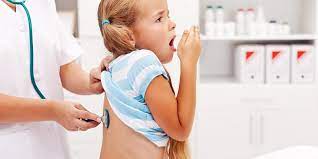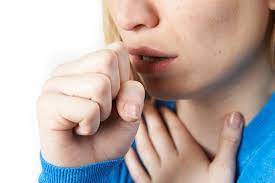Whooping cough
- 1/2/2018 – Annual Epidemiological Report 2017
- (November 26, 2015) Whooping cough: a big problem for the little ones!
It is an infectious disease of very contagious bacterial origin, caused by the Bordetella pertussis bacterium. Another bacterium from the same family, Bordetella parapertussis, is at the origin of a similar disease, parapertussis, which manifests itself, however, with milder symptoms.
Whooping cough is counted among childhood diseases, such as rubella, measles, chicken pox and mumps, and mainly affects children under 5 years of age.
Man is the only known reservoir of the bacterium; consequently the transmission of the disease occurs only between human beings. Adequate antibiotic treatment allows healing in a fortnight. Unlike other childhood diseases, the immunity conferred by a first infection is not definitive, but declines over time.
Whooping cough is widespread throughout the world, but has become very rare, especially in countries where generalized vaccination has been introduced in childhood. Today, 90% of pertussis cases are registered in populations where vaccination is not carried out, and in these cases whooping cough can lead to high mortality in children.
A return of pertussis was observed in vaccinated populations due to the progressive loss of immunity and, in fact, booster doses were not used when the vaccine was introduced 30 years ago.
In Italy pertussis is compulsorily notified to the health authorities.
Contrary to other infectious diseases, whooping cough can also affect newborns with an immune mother. In fact, it seems that the maternal antibodies that constitute their first defenses are not able to protect them against this infection.
Symptoms, Diagnosis and Complications
The whooping cough bacterium causes respiratory tract infections that can be invisible but also extremely serious, especially when the patient is a newborn.
Whooping cough is characterized by a persistent cough (for more than three weeks). The onset of the disease is manifested by a mild cough, accompanied by a few lines of fever and copious nasal secretions: it is the catarrhal phase, which lasts from 1 to 2 weeks.
 Gradually the cough becomes paroxysmal and is associated with breathing difficulties: it is the convulsive or paroxysmal phase, which can last more than 2 months in the absence of treatment. Following paroxysms, cases of apnea, cyanosis and vomiting can also occur.
Gradually the cough becomes paroxysmal and is associated with breathing difficulties: it is the convulsive or paroxysmal phase, which can last more than 2 months in the absence of treatment. Following paroxysms, cases of apnea, cyanosis and vomiting can also occur.
In young children, the most serious complications are bacterial superinfections, which can lead to ear infections, pneumonia, bronchitis or even neurological diseases (seizures, encephalitis).
- Coughing can also cause subconjunctival and nose bleeding. In newborns and infants under the age of 1, whooping cough can be very serious, even fatal.
- Confirmation of the diagnosis is mainly obtained by isolating the responsible bacterium, starting with nasopharyngeal aspiration.
Incubation and therapy
The incubation period is approximately 10 days. Whooping cough is highly contagious, especially in the initial period, before the onset of paroxysmal cough.
- Three weeks after the onset of the paroxysmal phase, the infection is considered negligible in untreated patients.
- On the other hand, in patients treated with antibiotics, the infectious period is reduced to about 5 days from the start of therapy.
- The infection occurs by air, probably through droplets of saliva spread in the air when the patient coughs. Therapy consists of antibiotics, often erythromycin.
If taken before the paroxysmal phase, the antibiotic shortens the time of contagion and the duration of the disease, but the symptoms are not always reduced. To relieve symptoms, antitussives, sedatives, antispasmodics are also prescribed.
Vaccination
The vaccine is based on heat-inactivated whole bacteria. It is often associated with diphtheria and tetanus (DTP) vaccine.

